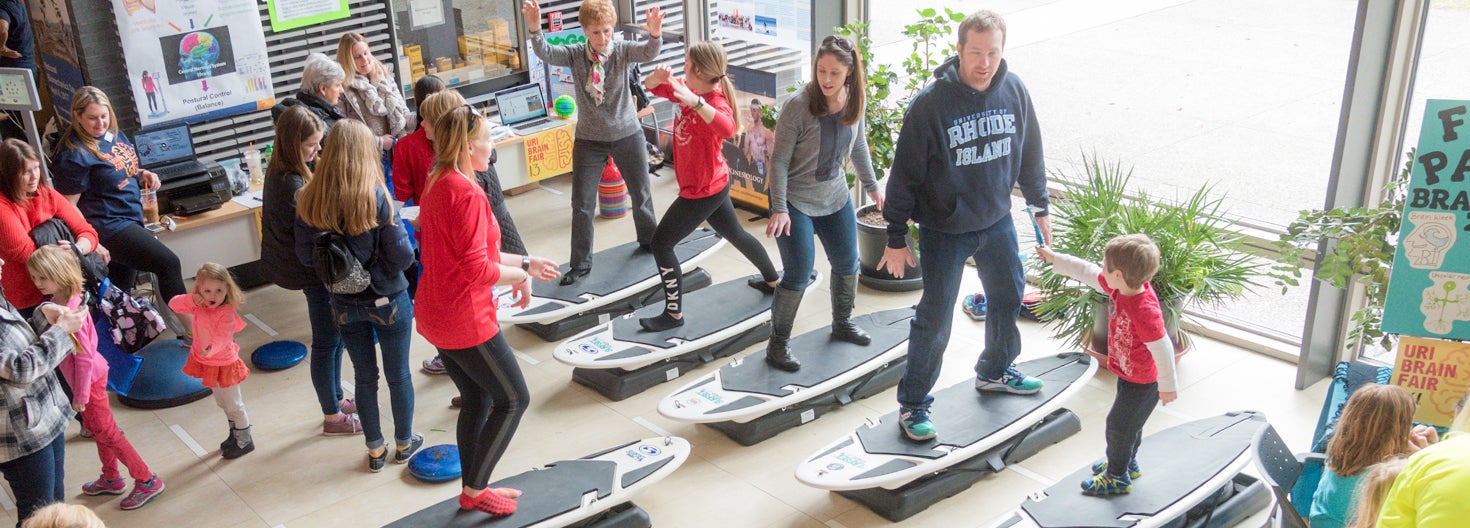The University of Rhode Island’s motto is Think Big, We Do; and the results of some of that big thinking were evident at the URI Brain Fair, which brought some 500 people to campus this spring.
The free, interactive, family-friendly event sponsored by URI’s George & Anne Ryan Institute for Neuroscience featured researchers, faculty, staff, and students from several colleges and departments. They demonstrated creative approaches to brain science, showcased URI research into brain diseases and illustrated simple ways to protect brain health, said Paula Grammas, Ryan Institute executive director.
Adults and children tried to balance on surfboard simulators while kinesiology faculty explained how the brain and body work together to allow us to “catch a wave.”
The event, part of Brain Week Rhode Island, is just one of the Institute’s multi-disciplinary efforts to advance neuroscience. Students and faculty from the Interdisciplinary Neuroscience Program, which offers master’s and doctorate degrees as well as a post-graduate certificate in neuroscience, also played an important part in the event.
Adults and children packed the College of Pharmacy atrium, where they tried to balance on surfboard simulators while Department of Kinesiology faculty explained how the brain and body work together to allow us to “catch a wave.”
Nearby, Alison McCallum and Alyssa Francis, psychology graduate students, presented brain teasers and puzzles that tested flexible thinking, impulsivity, and memory. “Everyone can practice these skills,” Francis said. “Some people are getting discouraged, and we are encouraging them to think differently than they do.”
In the 3D printing and molecular modeling studio, pharmacy student Robby Rocchio and nursing student Abby Cleland explained how the technology makes abstract concepts tangible. “A lot of people are really surprised we are able to print out these complex structures,” said Cleland, as the 3D printer churned out one of 857 sheets of material to create a model of a cholesterol-lowering drug.
In the 3D Visualization Theater, pharmacy Professor Bongsup Cho and student Rachel Carley had audience members don glasses for a journey that zoomed around the brain and explored DNA and viruses.
Audrey Cardany, associate professor of music education, and her students led musical jams to demonstrate what happens in our brains when we make music, listen to it, or move to it. “We don’t have a music center in our brain so it’s a full brain workout. That’s why it is so beneficial,” she said. “Being in the presence of music lights up your brain.”
Best of all, virtually everyone enjoys music, making this brain health prescription easy to fill. “It’s one of the few things in life that is enjoyable and is inherently good for you,” Cardany noted. “It’s a little different than ‘you have to eat those Brussel sprouts.’”

